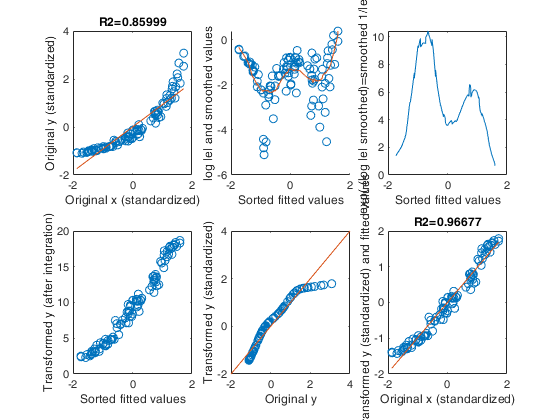This function estimates the integral of Y via the trapezoidal method.
For a function defined y=f(x) with n pairs (x_1,y_1) \ldots
(x_n,y_n), with x_1 \leq x_2 \leq, \ldots, \leq x_n,
if x_i<z_i \leq x_{i+1}, i=1, \ldots, n-1, this routine computes the
(approximate) integral using the trapezoidal rule:
a_i =
\int_{x_1}^{z_i} f(x) dx
More precisely
\begin{equation}\label{ai}
a_i= \sum_{j=2}^{i} 0.5 (x_j-x_{j-1})(y_j+y_{j-1})
+0.5 (z_i-x_i) \left\{ 2y_i+(z_i-x_i) \frac{y_{i+1}-y_i}{x_{i+1}-x_i} \right\}
\end{equation}
The last term of the equation is the area of the trapezoid with
coordinates
(x_i, y_i),
(z_i, f(z_i)) and
f(z_i)=y_i+(z_i-x_i) \frac{y_{i+1}-y_i}{x_{i+1}-x_i}
is found by linear interpolation.
If Trapezoid is omitted or is false,
when z_i>x_n the function for x >x_n is assumed constant and equal to
y_n therefore, to the expression of a_i computed as described above, we
must add (z_i-x_n) y_n.
On the other hand, if z_i<x_1 the function for x<x_1 is assumed
constant and equal to y_1 therefore a_i is computed as:
a_i = -(x_1-z_i) y_1
Note that a_i in this last case (if y_1 is positive) becomes negative.
On the other hand, if Trapezoid is true when z_i>x_n or when z_i<x_1,
we assume f(z_i)=\sum_{i=1}^n y_i/n.
This routine in called in every step of the outer loop by function avas
in order to compute a new set of transformed values for the response
which have approximately constant variance.
Inside avas, the x coordinates are the fitted values ordered, the y
coordinates are the reciprocal of the smoothed absolute values of
residuals sorted using the ordering of fitted values, while the upper
values of the range of integration are given by the elements vector
of transformed values in the previous iteration. The output is the new
vector of transformed values ty.


 Example of application of routine ctsub inside AVAS.
Example of application of routine ctsub inside AVAS.